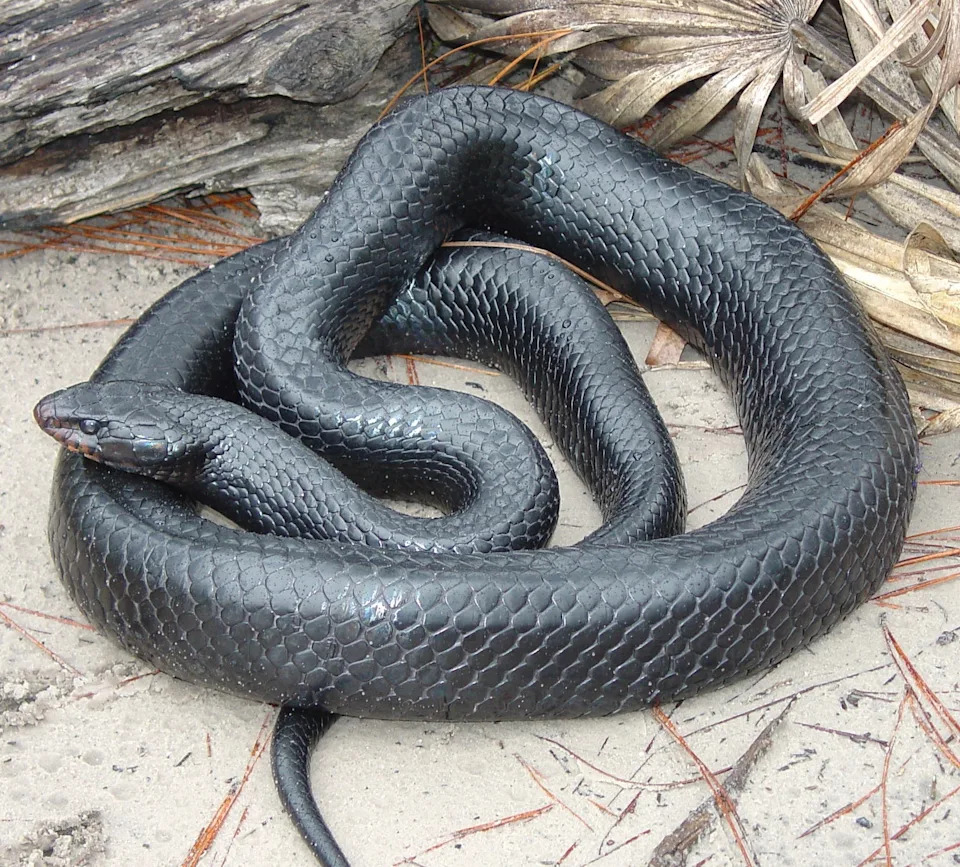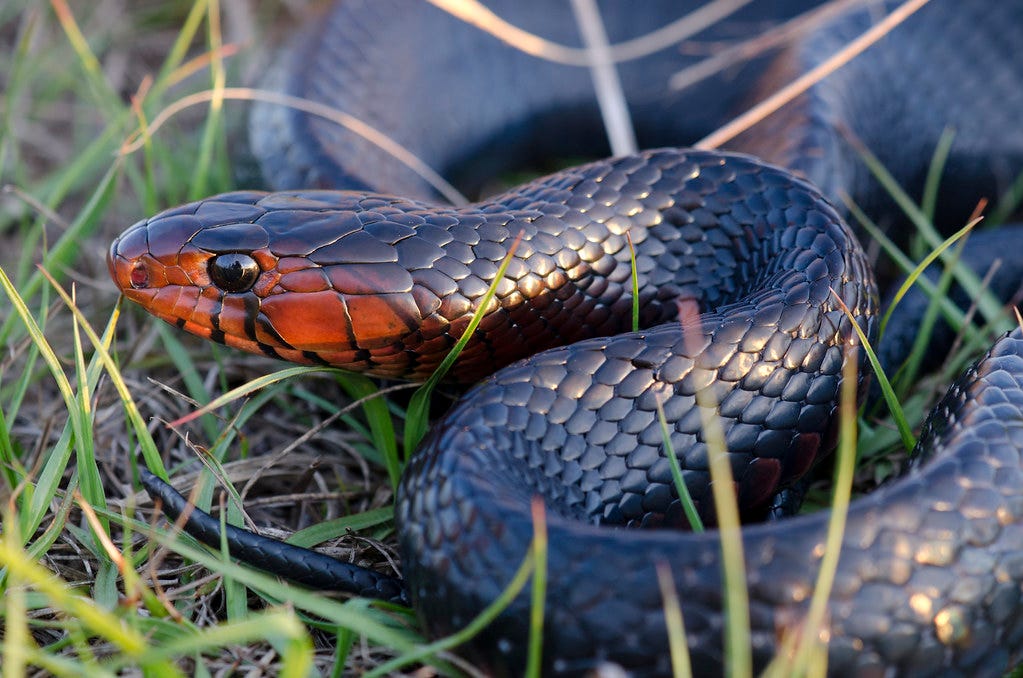Alabama’s lands are crawling with 49 species of snakes. Six are venomous, and the rest won’t bother you. One snake stands out, not for its bite, but for its size. What is the longest snake in the state, and is it dangerous? Here’s what to know.
What is the longest snake in Alabama?
The longest snake in Alabama is the Eastern Indigo, typically measuring six to seven feet from nose to tail. But they can get even bigger. The longest one recorded in the state stretched 8 feet 6 inches, found in Conecuh National Forest.
Native to North America, the Eastern Indigo holds the title of America’s longest native snake, with some on record reaching up to 9 feet in length.
What does the Eastern Indigo look like?
The Eastern Indigo snake is a glossy, deep blue-black snake with smooth scales and a hint of reddish orange on its chin and throat. It’s often mistaken for the black racer, but indigos are bulkier and move more slowly.

The Eastern indigo snake is the longest snake in Alabama.
Are Eastern Indigo snakes venomous?
Eastern Indigo snakes are not venomous.
Are Eastern Indigo snakes dangerous?
The Eastern Indigo snake is not a threat to people or pets, but to other snakes, it is a top predator. This nonvenomous species eats a wide variety of animals, including venomous snakes. According to Outdoor Alabama, rattlesnakes are a favorite meal, making the indigo the main natural predator of the Eastern Diamondback Rattlesnake.
Where does the Eastern Indigo snake live?
In Alabama, the Eastern Indigo snake prefers a specific type of habitat. Dry, sandy ridges are often shared with gopher tortoises. The snake relies on the deep burrows dug by these tortoises to escape extreme heat and cold. These sandhill areas are usually near swamps, cypress ponds and creeks, where dry uplands meet wetter lowlands.
Are Eastern Indigo snakes endangered?
The Eastern Indigo is federally listed as a threatened species and is fully protected under the Endangered Species Act. In Alabama, it’s also safeguarded under non-game wildlife regulations, meaning it’s illegal to harm, capture or kill one.
Jennifer Lindahl is a Breaking and Trending Reporter for the Deep South Connect Team for Gannett/USA Today. Connect with her on X @jenn_lindahl and email at jlindahl@gannett.com.
This article originally appeared on The Tuscaloosa News: What’s the largest snake in Alabama? It eats rattlers
